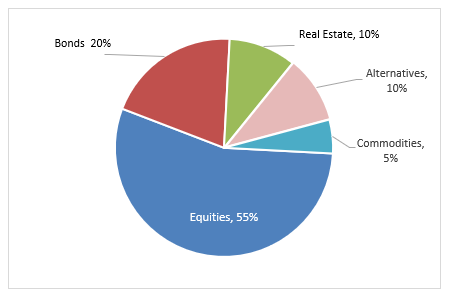Asset Classes
Lesson 7 Module 2
The studies I've seen, and there are many, agree that the way you spread your money among asset classes has the largest impact on your portfolio returns. That's what we will address in this lesson.
Best performing asset classes in 2019
Take a look at this table. Of the 50 asset classes tracked by AAII, these are the best 10 performers so far in 2019. The list is dominated by U.S. equity sectors, which isn't surprising given the strong bull market in the U.S. this year.
I'm showing this chart, and the next one, to give you a sense of what's working today. But our old friend Mean Reversion will make sure that the winners and losers will trade places as time goes by.
Worst performing asset classes in 2019
The losers are down on their luck, but only temporarily. They will surely rise again and take their place at the winners table. We just don't know when.
Equities
Of all the asset classes available for building a portfolio, equities are by far the most important. Equities are the engine that drives portfolio returns, but they are also the most vulnerable to decline when things get dicey in the economy.
This double-edged sword feature requires an investor to be careful not to allocate too much to equities, unless they are young and aggressive, and don't mind suffering big drawdowns from time to time.
Bonds
Bonds are the ballast in a portfolio, because they tend to hold up well during bear markets. But bonds don't generate much in the way of returns, so investors must weigh the benefits of having some stability in exchange for lower horsepower.
Real Estate
At first glance, one would think that investing in real estate is a no-brainer. Real estate always goes up, right? Wrong. Remember the housing bubble and bust in 2008? Real estate investors got hurt, and it could happen again.
Once again, investors need to be careful not to allocate too much to this asset class.
Commodities
Commodities are in a class of their own. They have a poor return record over time but they have one important advantage for portfolio construction - their non-correlation with most other asset classes. As a diversifier, commodities are hard to beat.
Plus, every once in a while commodities awaken and outperform everything else. That means an investor who is mindful of the relative valuation of this asset class can make a decent return by adding money when commodities are cheap and reducing exposure when they are dear.
Alternatives
This asset class includes several sub-classes that share a single feature - low correlation with equities. But they also have lower trading volume and higher expense ratios. So care must be taken to avoid buying alternative vehicles that are expensive to own and don't add much in the way of diversification or added returns.
Next, let's look at a tilted portfolio that allocates more to equities and less to other asset classes. The expected return for this portfolio is higher than the equal-weighted naive one.
Introducing Portfolio #2 . The Tilted Portfolio
Unlike the naive portfolio that spread your funds evenly across all 10 asset classes, the Tilted Portfolio includes only the asset classes that are relevant to your stated investment goals and leaves the rest aside. In doing so, you are deviating from the plain vanilla, off-the-rack portfolio design and starting to build something that's tailored to your needs and circumstances.
But how do you decide which asset classes to tilt towards, and which to set aside? That's the subject of an upcoming lesson. For now let's just consider the big picture, and then we can get into the details later on.
Next, let's consider the steps you'll take to arrive at the portfolio tilt that's right for you.




Leave a comment
Comment as a guest: